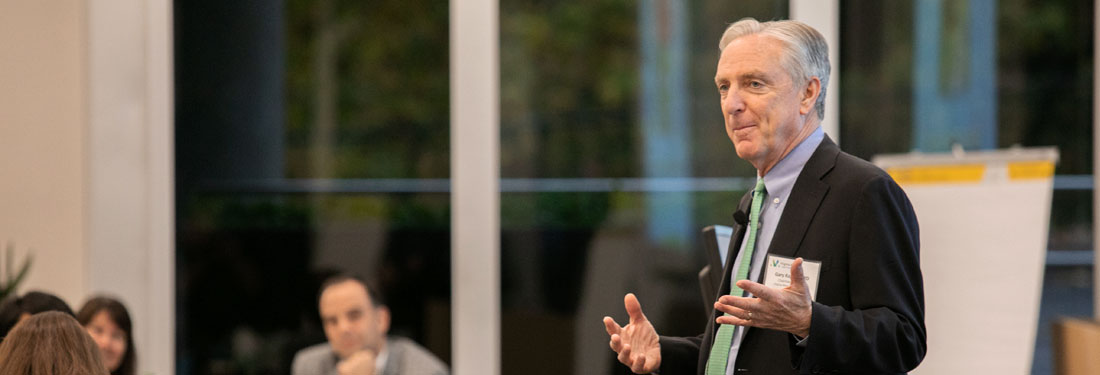Respect for People: The Power of a Shared Vision
Build trust and respect by listening to the frontline worker
In my early days at Virginia Mason, I worked as a nurse in the inpatient neurosurgery unit. It was a busy place, with complex patients. I honed some valuable clinical skills during my time in that unit, but what I remember most, years later, is the care team collaboration.
One particular memory stands out, especially when I’m asked about Respect for People. A surgeon on the team specialized in complex spine procedures, and his patients interacted with clinicians and staff from many departments during their recovery. When he arrived each day to round with patients, his first stop was to find out who the patient’s nurse was, so that he could involve them in the exam and discussion with the patient. I always felt my input and observations were valued. What struck me even more was that he asked everyone involved with the patient for their input. I still remember the first time he asked a patient care technician (PCT) how she thought the patient was doing and what the patient needed. The look on the PCT’s face was one of, “Who me? You’re asking me what I think? I’m ‘just’ the PCT.” In fact, he really did want to know, and he really did listen. Even more impactful was that he asked in front of the patient, who saw and heard their surgeon include and value the input of the whole care team.
Create an environment that encourages team members to collaborate
A few years later, I had transitioned into a leadership role in the Emergency Department (ED). Virginia Mason had recently built a new hospital tower, including a brand new ED. It was an exciting and busy time planning for the move. At the same time, we were refurbishing a unit in the current hospital to house a new observation unit to accompany the ED. Almost all of the staff of the new unit were hired from outside the organization. And the new unit needed to open on the same day we transitioned to the new ED. That meant that 30 new team members (nurses, nurse aides and unit secretaries) had to be oriented and trained in other units throughout the hospital. I was a new leader and this project was assigned to me. I had a few contacts in other departments, but I didn’t have relationships with the other nurse leaders yet. When I started calling them to discuss the organization’s plan to train the observation unit team, it was like calling a friend. Everyone was immediately responsive and collaborative. They moved nursing schedules around in their own units to create a safe and effective plan. If challenges came up, they called me and we worked it out. They did what had to be done as if they were training staff on their own units. It was that moment that made me realize the power of a shared vision as a foundation of Respect for People. The people are Virginia Mason, no matter what unit or department you may call home, or for which you have budgetary responsibility. It was one of many moments at Virginia Mason that I felt part of something bigger than myself.
“If we don’t continually work to create a culture in which we talk about respect and disrespect, we risk creating a culture in which people don’t speak up because they feel unsafe.”
Sustain a culture of respect through transparency and accountability
Fast forward to a few months ago, during one of our Friday report-outs – a weekly gathering when staff at Virginia Mason share learnings from improvement work happening in the organization. Dr. Gary Kaplan, Virginia Mason’s chairman and CEO, facilitated a discussion about Respect for People. What he asked was, “How are we not showing respect for people?” For years we have actively talked about how and when we do show respect. But where do we still need to improve? Asking critical questions about our culture isn’t only about respect. It’s about discipline. It’s about accountability. It’s about transparency. If we don’t purposefully revisit our Respect for People behaviors, we risk missing the opportunity to recognize passive or implicit disrespect. If we don’t remind each other of the meaning behind the actions, then they become simple words on a piece of paper. If we don’t continually work to create a culture in which we talk about respect and disrespect, we risk creating a culture in which people don’t speak up because they feel unsafe. My PCT colleague in neurosurgery was probably more likely to speak up about patient safety when she felt included and respected. As a nurse leader, I was more likely to approach a colleague leading another unit with a safety concern, knowing that I’d be received with respect. Finally, respect for people starts at the top. When the CEO invites open and honest dialogue about respect, it sets a clear tone for the organization.





